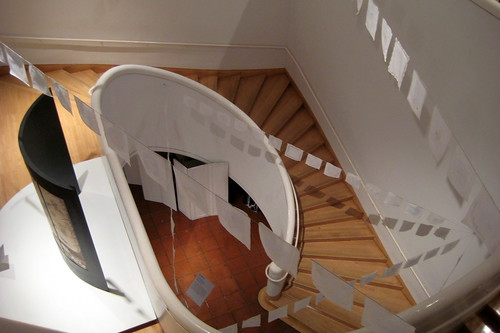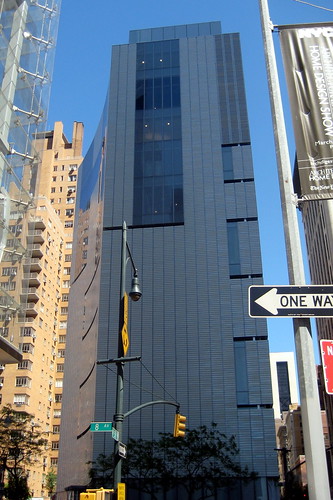A few nice art design images I found:
NYC: Museum of Arts & Design
Image by wallyg
The Museum of Arts & Design (MAD) is a center for the collection, preservation, study, and display of contemporary hand-made objects in a variety of media. Founded as the Museum of Contemporary Crafts in 1956 by philanthropist Aileen Osborn Webb, it was originally housed in a Victorian brownstone at 29 West 53rd Street. In 1986, the museum moved to four floors of a new building at 40 West 53rd Street and was renamed the American Craft Museum. The new space, designed by Roche-Dinkeloo, with an interior created by Fox & Fowle Architects, doubled the space of the original quarters. In 2002 it changed its name again to the Museum of Arts & Design.
In September 2008, MAD moved to a new location at 2 Columbus Circle, designed by Brad Cloepfil and Allied Works Architecture. With more than 54,000 square feet and four floors of galleries, the museum tripled its space.
The design for the new building dramatically opened up the 158-foot tall nearly windowless building to enliven its gallery space with natural light and views of the city. A series of three separate cuts, each one a continuous line fitted with transparent and fritted glass, weaves across the building’s facade to create a light-filled, cantilevered structure. These bands of glass continue inside the building across the floors, ceilings, and walls of each level, to provide a unified sense of space and a visual connection among the galleries.
The building’s façade is clad with custom-made terracotta tiles finished in a pale iridescent glaze that changes with the time of day and point of view. Through the use of glass and ceramic, two materials that figure prominently in the Museum’s collection, the new building design explores and interprets the craft traditions of the institution’s core mission.
NYC - Museum of Arts & Design
Image by wallyg
The Museum of Arts & Design (MAD) is a center for the collection, preservation, study, and display of contemporary hand-made objects in a variety of media. Founded as the Museum of Contemporary Crafts in 1956 by philanthropist Aileen Osborn Webb, it was originally housed in a Victorian brownstone at 29 West 53rd Street. In 1986, the museum moved to four floors of a new building at 40 West 53rd Street and was renamed the American Craft Museum. The new space, designed by Roche-Dinkeloo, with an interior created by Fox & Fowle Architects, doubled the space of the original quarters. In 2002 it changed its name again to the Museum of Arts & Design. In September 2008, MAD moved to a new location at 2 Columbus Circle. With more than 54,000 square feet and four floors of galleries, the museum tripled its space.
NYC: Museum of Arts & Design
Image by wallyg
The Museum of Arts & Design (MAD) is a center for the collection, preservation, study, and display of contemporary hand-made objects in a variety of media. Founded as the Museum of Contemporary Crafts in 1956 by philanthropist Aileen Osborn Webb, it was originally housed in a Victorian brownstone at 29 West 53rd Street. In 1986, the museum moved to four floors of a new building at 40 West 53rd Street and was renamed the American Craft Museum. The new space, designed by Roche-Dinkeloo, with an interior created by Fox & Fowle Architects, doubled the space of the original quarters. In 2002 it changed its name again to the Museum of Arts & Design.
In September 2008, MAD moved to a new location at 2 Columbus Circle, designed by Brad Cloepfil and Allied Works Architecture. With more than 54,000 square feet and four floors of galleries, the museum tripled its space.
The design for the new building dramatically opened up the 158-foot tall nearly windowless building to enliven its gallery space with natural light and views of the city. A series of three separate cuts, each one a continuous line fitted with transparent and fritted glass, weaves across the building’s facade to create a light-filled, cantilevered structure. These bands of glass continue inside the building across the floors, ceilings, and walls of each level, to provide a unified sense of space and a visual connection among the galleries.
The building’s façade is clad with custom-made terracotta tiles finished in a pale iridescent glaze that changes with the time of day and point of view. Through the use of glass and ceramic, two materials that figure prominently in the Museum’s collection, the new building design explores and interprets the craft traditions of the institution’s core mission.
No comments:
Post a Comment